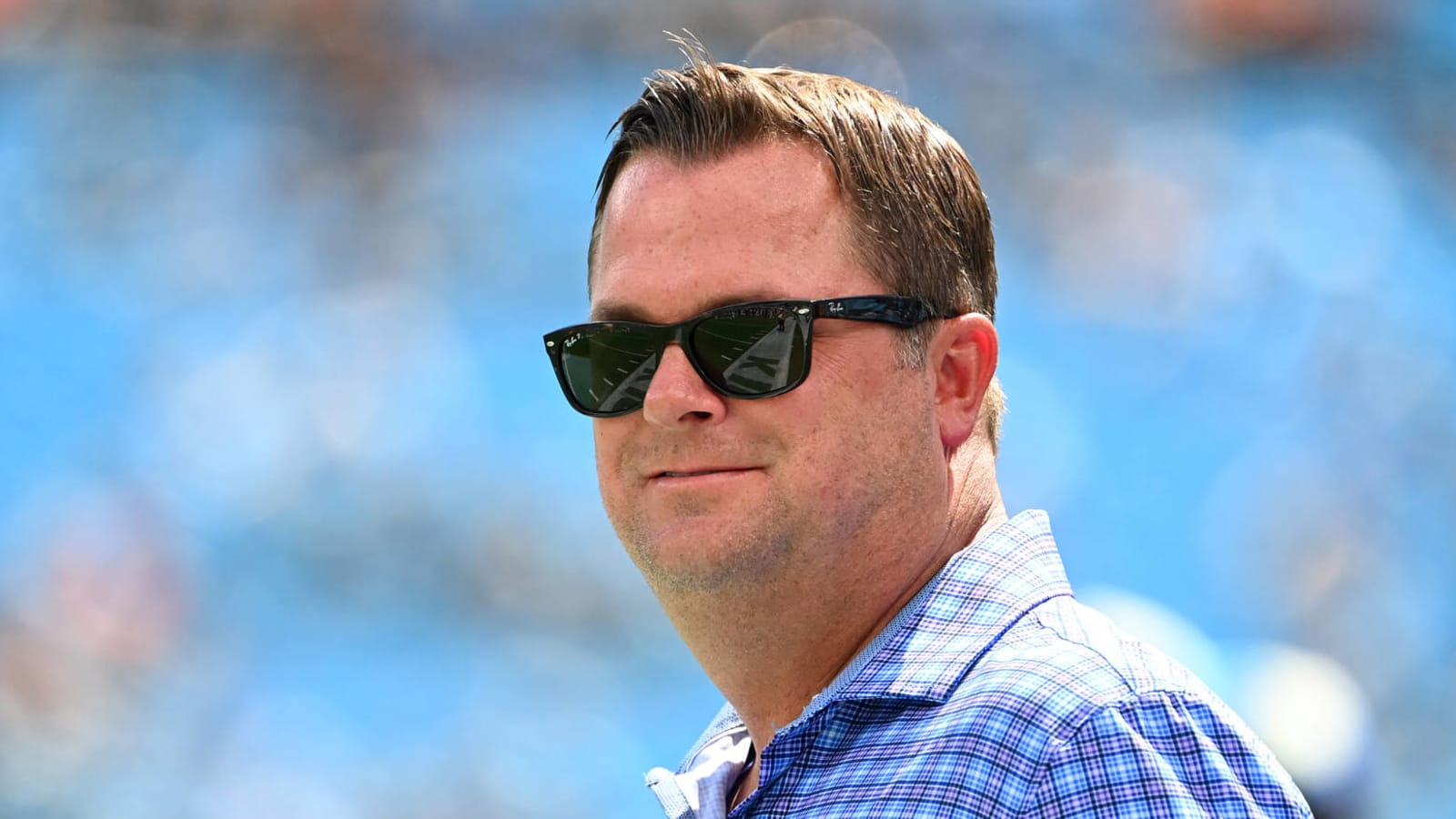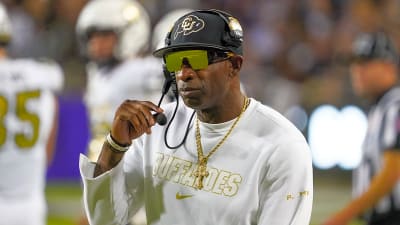
There will likely be more GM openings compared to the 2023 cycle. After the Raiders and Chargers fired their respective GMs in-season, the Commanders are expected to follow suit after the season. Given the turmoil in Carolina, it should also be viewed as likely the Panthers clean house.
Scott Fitterer is probably in his final weeks on the job in Carolina, with The Athletic’s Joe Person indicating many around the league point to the third-year GM being canned soon. While Fitterer is well liked around the league, the Panthers have struggled during his tenure. Considering how quick David Tepper was to pull the plug on Frank Reich, Fitterer’s 2024 ouster has been rumored for a bit.
The longtime Seahawks exec loomed as a GM candidate for a stretch before his 2021 hire, and he signed on to work alongside Matt Rhule. The latter ran the show in Carolina during his three-year HC tenure, but Fitterer’s solo run has produced roster fireworks. The Panthers traded Christian McCaffrey shortly after Rhule’s firing and they turned down a monster Rams offer (two first-round picks and a third-rounder) for Brian Burns. Bears negotiations in the winter included Burns and Derrick Brown, but Fitterer and Ryan Poles came to an agreement on a deal that sent D.J. Moore and a host of draft picks to Chicago for the No. 1 overall slot.
Tepper has widely been viewed as leading the charge for Bryce Young, but that swap has burned the Panthers early. Because of Carolina’s 2-12 record, Chicago is close to obtaining the No. 1 pick for a second straight year. It looks like Fitterer will pay the price. The Panthers sport a .292 win percentage since 2021, which matches the Bears for the NFL’s lowest during that span. The next Panthers power structure will be tasked with rebuilding Young, who is believed to have suffered from a complicated offensive approach built on combining Reich and OC Thomas Brown‘s visions.
As the Panthers remain connected to an offense-oriented coach – one who will be OK working with Tepper given the run the sixth-year owner is on – they look to be considering pairing that to-be-determined leader with DC Ejiro Evero. The Panthers are intrigued by the idea of Evero staying and working alongside the team’s next HC, ESPN’s Jeremy Fowler notes.
A sought-after HC candidate this offseason, Evero ended up as the Panthers’ DC after the Broncos let him out of his DC contract. Evero interviewed for the Vikings and Panthers’ DC jobs, after meeting with Carolina about the HC job that went to Reich. Bolstering his reputation on Nathaniel Hackett‘s sinking Broncos ship last year, Evero became the rare in-demand coordinator from a 5-12 team. The Broncos also expressed interest in keeping Evero to team with Sean Payton, but the sides determined it was not a fit. Denver rehired Vance Joseph, while Evero’s stock has not dropped much despite Carolina’s 2023 futility.
A wide disparity exists between the Panthers’ points and yardage rankings on defense; Carolina ranks 29th in scoring defense but third in yards yielded. The Panthers’ pass defense also ranks third. DVOA leans toward the scoring number as more indicative of the defense’s true performance; Carolina’s defense sits 27th here. The Panthers have, however, played much of this season without top corner Jaycee Horn and linebacker stalwart Shaq Thompson.
It will be interesting to see if Tepper would consider forcing Evero upon his new HC. That seems like a stretch, considering the team’s unraveling after Steve Wilks‘ admirable interim effort and the owner’s own reputation likely to make a hire more difficult this year. But this scenario does look to be in play. If so, Evero would be on the verge of developing an interesting reputation for garnering praise despite being a DC for bad teams.
More must-reads:
- Jerry Jones shares his thoughts on George Pickens' effort
- Franchise tag might be Cowboys' best option for George Pickens
- The 'Receiving leaders by NFL team' quiz
Breaking News
Trending News
Customize Your Newsletter
 +
+
Get the latest news and rumors, customized to your favorite sports and teams. Emailed daily. Always free!








